- Home
- slideshows
- miscellaneous
- The best smart thermostats
The best smart thermostats
The best smart thermostat overall

The best smart thermostat runner-up
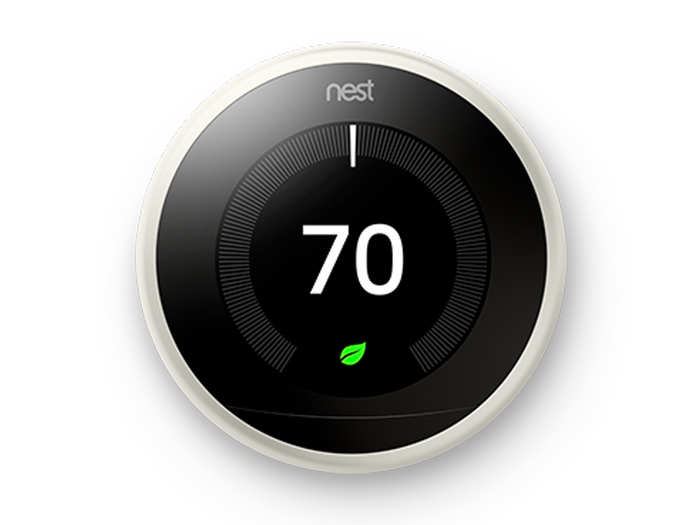
The third-generation Google Nest Learning Thermostat (model number T3007ES) and our top pick, the Thermostat E, share a lot in common. Both work with several two-wire systems. Both integrate well with Google Nest smart devices and support Alexa. And, both have outstanding learning capabilities: The thermostats will start heating or cooling based on how long it takes for your home to adjust to the setpoints you have scheduled, so the temp will be where you want it, when you want it.
The biggest differences between Google Nest's top thermostats is the Learning Thermostat has a two-year warranty (versus one-year for the E), the Learning Thermostat's big display has a higher contrast for easier readability, and this model only costs about $45 more.
The Learning Thermostat is also available in four trims to complement your décor: stainless steel, bronze, copper, and white. If a longer warranty, higher contrast display, and choice of trim are important to you, this model may be worth the extra expenditure. Otherwise the Thermostat E works just as well with most HVAC systems.
Whether you pick this or the Thermostat E, both are solid options.
Pros: Learns from your behaviors and your home's thermal characteristics, geofencing, works with Google and Alexa smart home, easy to install, terrific app, high-contrast display
Cons: Pricier than Thermostat E with nearly the same functions
The best budget smart thermostat
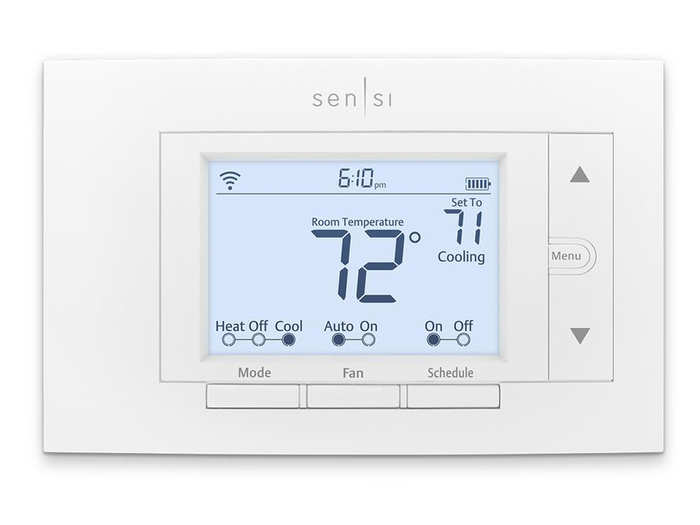
The Emerson Sensi Wi-Fi Smart Thermostat (model number ST55) stands out because it provides many of the same high-end features found in top-of-the-line smart thermostats that cost twice as much. The intuitive app has several video tutorials that make installation and programming tasks a breeze. And, it works with Amazon's Alexa.
You can set up geofencing in the app and also choose a custom flexible schedule. Saving on your energy bills is effortless thanks to the usage report generated by the device. If there are extreme temperature or humidity conditions in your home, the app will send you notifications immediately so you can avoid potential problems.
The unit itself looks more like a traditional thermostat and less like a smart home device. If you want the latter, Emerson has the newer Sensi ST75, but it costs $50 more and requires a C-wire.
Note: The first-generation Sensi Thermostat was recalled due to fire safety issues. You probably won't find this model for sale anywhere, but do make sure you buy one from a reputable retailer.
Pros: Accurate temperature readings, the app makes installation effortless, access HVAC settings from anywhere, custom temperature control settings and options, cheapest of our recommendations
Cons: Requires a strong Wi-Fi signal, not compatible with all smart home products
The best Z-wave smart thermostat
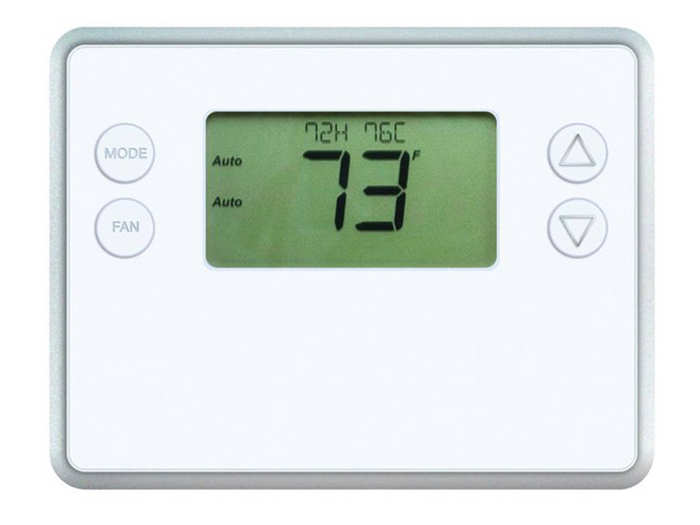
The GoControl Z-Wave Battery-Powered Smart Thermostat (model number BRO-NTBZ48) takes a unique approach to the "smart" paradigm. Rather than connecting to your home's Wi-Fi for remote access, the GoControl unit relies upon Z-wave technology. This has its pitfalls and advantages. Z-wave is great because it doesn't require much power so it can be used in a two-wire setup with batteries, or you can power it using a C-wire.
However, to get many of the features common in most smart thermostats, you have to rely heavily on your Z-wave hub or controller. One of the most popular solutions is the Samsung SmartThings hub, which allows you to adjust your home's setpoint from anywhere and to make a schedule. Unfortunately, on its own without a good Z-wave hub, the GoControl unit is basically just a non-programmable digital thermostat.
Pros: Affordable, uses low power-consuming Z-wave technology, doesn't require C-wire, can be battery-powered, can control multi-stage heating and cooling appliances
Cons: Requires a high-quality Z-wave smart home hub for most common smart features, including remote access and programming
The best smart thermostat with voice assistant
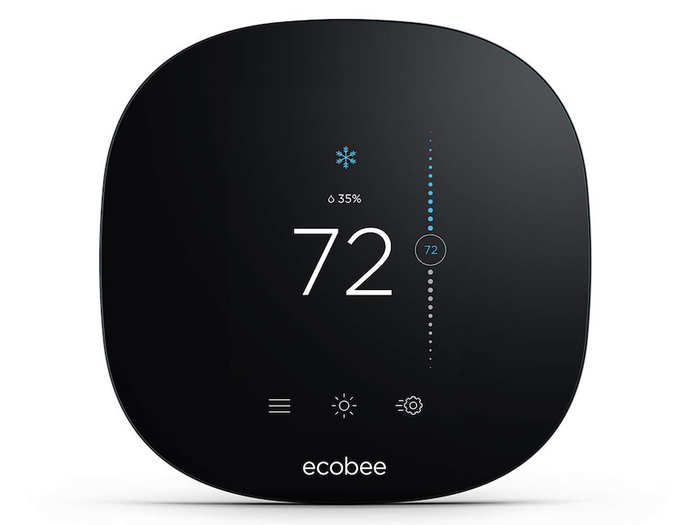
All of our recommendations support voice assistants via a smart speaker, but the Ecobee SmartThermostat with Voice Control is unique in that it has a built-in Alexa smart speaker, similar to an Amazon echo product. That means the SmartThermostat not only controls your home's climate system, but it can also stream podcasts and music, send messages or make calls, control other Alexa-compatible devices, and other skills you would use Alexa for.
If you already have Amazon Echo devices installed in your home, adding another one might be overkill. But, if you're outfitting your home to be smart from scratch or you hate having devices littered all over the house, this hybrid thermostat/smart speaker is an elegant solution. When placed in a social area, you can also use it for entertaining.
The SmartThermostat comes with a SmartSensor, which takes temperature readings and senses occupancy in the room where you place it. It reports this information back to the thermostat, which then adjusts the heat or AC.
I installed the SmartThermostat with two SmartSensors in my house. The sensors do a great job of taking accurate temperature readings and help regulate the comfort settings in my drafty, three-story house. I had a little trouble keeping the SmartSensors connected at first, but this was due to a bug in earlier models; Ecobee has since fixed this problem.
I like that I can easily set up a schedule using the app. And, after a few minor tweaks during first use, I no longer have to think about adjusting the thermostat anymore.
Although it's fun to ask my thermostat to tell my Roomba to start cleaning, I ultimately found the voice control to be more of a novelty. On the other hand, the speaker is quite useful: My thermostat is in the dining room, where it's nice to have a little background music once in a while.
Pros: Dual-band Wi-Fi, built-in Alexa, high-quality speaker, works with the most popular home automation systems, intuitive app
Cons: Doesn't work with all HVAC systems, difficulty connecting remote sensors
Read our full review of the Ecobee SmartThermostat with Voice ControlWhat else we considered
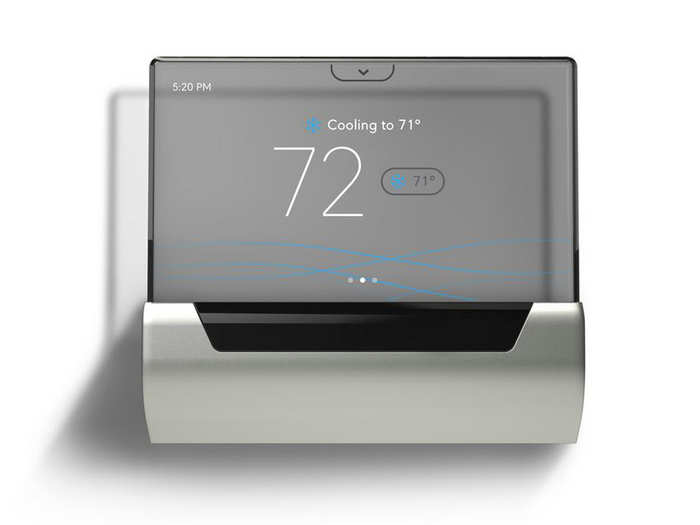
While researching this guide, we considered dozens of smart thermostat models. Here are five that just missed the cut.
Honeywell Home RCHT8612WF T5 Plus Wi-Fi Touchscreen: There's a lot to like about this thermostat. It's affordable, supports Apple HomeKit and Alexa, and according to expert sites, like The Wirecutter, it works as advertised. However, it isn't as easy to use as the models in our guide, and you need a C-wire to install it. It also lacks the high-end features you find with the Nest and Ecobee units, like auto-creating custom schedules.
Ecobee4: The fourth-generation Ecobee was in the last update of our guide because it was the first thermostat to have a built-in digital assistant, Alexa. Plus, you can use it with a variety of other smart home systems. It's also easy to use and well designed. Though it's more expensive, the latest Ecobee SmartThermostat is a better solution since it has an outstanding speaker and comes with a SmartSensor.
Honeywell RCHT9610WFSW2003 RCHT9610WFSW Home T9: This Honeywell unit comes with a remote sensor that gauges the room's occupancy, humidity, and temperature and delivers comfort where you want it most. It also has geofencing, monthly energy reports, easy installation, and works with the most popular home automation systems, except HomeKit. Unfortunately, the thermostat doesn't allow you to use a schedule and geofencing at the same time – you have to choose one or the other.
Glas by Johnson Controls: The highlight of the Glas is its artistic, transparent display that allows it to blend with the wall that it's mounted on. In its resting state, there's no info on the display, but when it senses motion, it offers up the current room temperature, setpoint, and system state in large, easy-to-read characters. At this price point, one might expect all the whistles and bells, but the Glas is missing geofencing and on-thermostat password protection.
Schneider Electric Wiser Air Wi-Fi: Consumer Reports recommends this Schneider thermostat because its EcoIQ mode can learn the heating and cooling characteristics of your home and your behaviors and automatically adjust accordingly for maximum comfort. On the downside, it lacks geofencing, password protection, and the only way to create an operating schedule is in the app — you can't do it on the thermostat.
What we look for in smart thermostats

There are many characteristics I look for in a high-quality smart thermostat. When possible, I test units firsthand. I also research the assessments of other established reviewers, like Consumer Reports and CNET. I'm able to compare the key performance indicators of top models after looking through the manufacturers' specs and analyzing my and other experts' testing and research.
Here are the main attributes we look at:Installation: You can save hundreds of dollars by installing your thermostat yourself instead of hiring a professional. First, you must determine whether the thermostat is compatible with your wiring. Most manufacturers provide steps for doing this. Specifically, you'll want to determine whether you have a C-wire. If not, you'll need a thermostat that doesn't require a C-wire. Also, we try to find thermostats that install quickly — typically in under an hour — without the use of specialized tools.
Smart features: If you're shelling out the big bucks for a smart thermostat, you want the smart features. Popular features we look for are geofencing that can sense when you are home or away, learning based on your behavior and how your home heats up and cools down, remote sensors, compatibilities with digital assistants (e.g., Alexa, Google Assistant, Siri, etc.), integration into smart home systems, and more.
Ease of use: Whether you're adjusting it manually, accessing it remotely via the app, or using voice controls, smart thermostats must be easy to use. This includes having an intuitive menu interface and maintaining a consistent Wi-Fi connection.
Automation: Though ease-of-use is nice, you also want to be able to set up your thermostat and forget about it. At a basic level, you should be able to schedule your thermostat to provide the most comfort when you are home and awake and to save money when you are away or asleep. Several smart features aid with the automation, such as sensors that adjust based on the temperature and occupancy of specific rooms, geofencing tracking whether you're home or away, and algorithms assessing how long it takes to heat and cool your home.
Energy savings: Though most smart thermostats are sure to pay for themselves in energy savings, the best models leverage smart features and your energy use history to save you even more. Energy Star certification is important and can earn you a rebate. All of the Wi-Fi-enabled smart thermostats in our guide are Energy Star-certified.
Popular Right Now
Popular Keywords
Advertisement